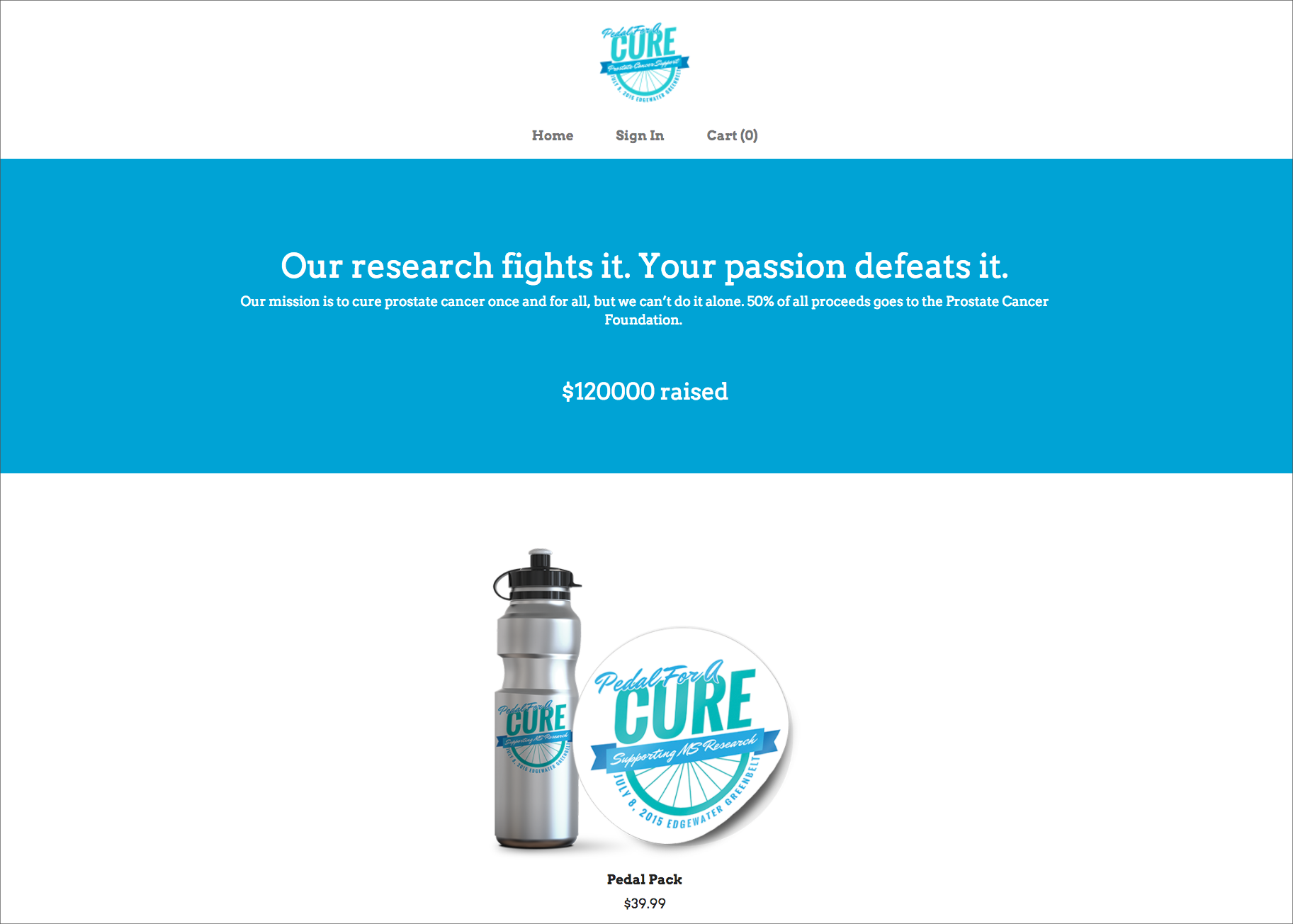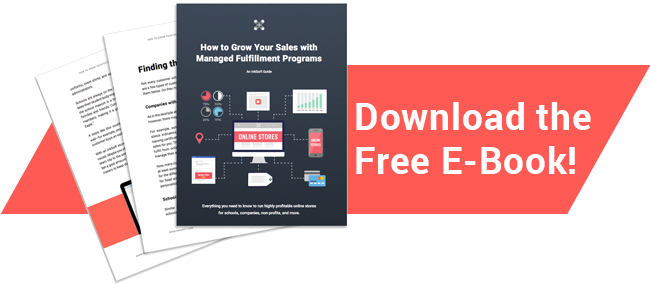As a garment decorator, chances are you’ve worked with at least one fundraising client before. It’s one of those mutually beneficial relationships that helps keeps two industries afloat. But here’s the thing””even if you’ve been working with nonprofits for years, you may never get to see exactly what’s going on on their end.
The problem
The reality of fundraising is incredibly stressful, and the fundraising manager is under a tremendous amount of pressure to sell all of the shirts they just ordered from you. Some try to mitigate that stress by collecting orders ahead of time, but those paper order forms are a pain to manage, and it’s hard to sell a product without a good mock-up. Then, collecting and cashing all of those personal checks is far from the best part of their day.
When it’s time to deliver all the shirts, your customers are faced with the headache of managing shipping and painstakingly counting stock to ensure that all the shirts go to the right places. And if they’re selling the shirts at an event, they need several people to man the booth and process payments.
The solution
Anyone who can remove these stressors will shoot to the top of the fundraising manager’s list. That means as the decorator, you are in the perfect position to win over fundraising clients for life without much extra effort on your end. The trick is to create a system that makes it easy to collect orders directly from buyers, then offering to ship individually so the manager doesn’t have to worry about managing stock.
Spoiler alert: We’ve made this super simple to do with Online Stores. Here’s how it works.
-
- The fundraising client shares their goals and what kind of product they want to fundraise with.
- You set up an online store with a mockup of the pre-decorated product.
- They promote the store’s URL to their supporters.
- The supporters order and pay online.
- Using the aggregated order data, you produce and ship the goods, then send the fundraising portion of the profit to your client.
- Your client is thrilled at the turnout with so little effort, and you walk away with a nice boost to your revenue.
This system works because it makes everyone’s lives easier. The donor loves the ease or ordering online, the client loves that they don’t need to manage the details, and all of the order data is compiled from the start. You’ll see exactly what blanks you need to order and how much to decorate (no more typing paper forms into Excel sheets!), and the buyer’s already paid enough to cover shipping.
It’s a repeatable process that wins you a nice profit and loyal customers.

How to find your first fundraising clients
Okay, you might be thinking, this sounds great, but how can I convince a nonprofit to fundraise with me?
I’ll tell you right now that this is going to be one of the easiest sales you’ve ever made.
If you’ve never worked with nonprofits before, start by researching active ones in your area. Pay attention to upcoming events and how involved their audience is. Your ideal client is a nonprofit that runs several different fundraising events throughout the year and communicates regularly with their supporters via email and social media.
Next, put together a demo store. Put their logo on a product or two, and ensure the store colors match their color scheme. While you’ll use actual art later, this is enough to use as a live demonstration. When you meet, explain how simple it’ll be to share a single link instead of managing piles of order forms and checks. Talk about how online sales are rapidly rising, and explain how in the new economy, their supporters desire convenience.
Finally, make them an offer they can’t refuse. Specifically, offer this store for free. You’ll already be making all the profit you need from the product mark-up, and keeping it risk-free on the nonprofit’s end will only help you make the sale. You’ll still want to require a minimum order amount to protect your own business (we’ll get to that later), but a free store makes the whole system incredibly appealing to cash-strapped organizations.
Psst – We talk more about this in our latest e-book!
Diving into the details
The second half of your sales meeting will be hammering out the details. Here are the topics you’ll need to address before the store is launched.
Fundraising percentage
The client might be happy with 15%, but there’s a big difference between 15% of the profit and 15% of the revenue. Be really clear about what they can expect, and remember that the words you use matter.
Order minimums
To ensure that the fundraiser is a success and you’re not left printing two 6-color shirts, set an order minimum. Make sure the client knows that if the order minimum isn’t met, all orders are cancelled and refunds will be processed.
The actual minimum order amount is up to you. At what point is it a profitable job? Before settling on a number, though, also consider that the order minimum can be a tool for keeping the client engaged. It should be a number that, once achieved, gives high enough profits that the nonprofit sees the immediate value of continuing to promote the fundraiser. Similarly, it should be a number where if they’re just beneath it, they’ll feel the pressure to hit it because the cancellations will have a negative impact on a noticeable portion of their supporters.
The products they’ll fundraise with
T-shirts are the go-to, but don’t limit yourself. What else can you decorate or provide? Sometimes, smaller investment can spread to more supporters faster. We’re continually impressed by an InkSoft user who ran a fundraiser that produced over $34,000 with nothing more than silicone wristbands.
It’s also important to remember that an online fundraising store is very different from a normal online retail store. From our experience, stores with 1 to 3 products tend to do better than stores with lots of products. Keep the decision simple for donors. That said, it could be helpful to add a “˜free gift’ to the offer to encourage reciprocity.

Product design
Are you decorating with the charity organization’s logo, or something custom? Focus on the end customer. People buy and wear T-shirts as a method of self-expression. Therefore, the logo is a great option when the nonprofit is well-known and communicates something about the wearer. However, oftentimes a catchy statement about what the organization stands for, or even outright art, can be even more appealing to buyers who want to support the cause but don’t want to wear a logo.
Are they open to a discount for your own promotion?
Easy marketing! Offer a discount to the nonprofit if they’re willing to let you add a line of promotional text to their fundraising store. This can be as simple as “Want to create your own online fundraising store? Contact [your business name] to get started.” Those who donate to fundraisers are often involved in the nonprofit community themselves, making this a great place to attract new clients.
Make it official
Whatever decisions you make together, be sure to get it in writing. Ideally, you’ll want to work with a lawyer to create a standard contract you can use. This way, if anything goes wrong, you can show the fundraising client exactly what they agreed to, and you’re covered legally.
Making the fundraiser a success
Your client is responsible for marketing, but their success is ultimately your success. So, anything you can do to help them make more sales is in your best interest.
The best way to do this is to prepare a “success kit” that they can use as a guide. When they have concrete steps in front of them, promotion will be far easier. This success kit should include:
Fliers they can distribute
Offer a flier with a product image and the store URL that they can distribute to their supporters. Either create one from scratch, or you can modify our ready-made marketing fliers in the Design Resources section of the InkSoft Admin Portal.
While a custom flier for each client is the easiest option for them (and therefore more likely to be used), you could also provide a more generic template made in Photoshop, Illustrator, InDesign, or even Word that they can modify and print on their own.
Marketing checklist
Give them concrete steps them can take to promote their store and collect more orders. The checklist might include:
- Social posts:
- Share the link with the product image on Facebook, Twitter, and Instagram
- Later, share an update on the fundraiser’s progress on these channels
- Email the link and product image to your email list
- Distribute fliers at your next live event
- Highlight the store in your next newsletter mailer
- Add a link to the store on your website homepage
- Instructions on how to reach out to local media
If the fundraiser is for a specific event, human interest, or other larger story, there’s a good chance they could get some coverage from the local news. You don’t need to be the expert in this””just find a few articles online on how to share a story with journalists. Share the article links in the success kit (or email them), and encourage them to try pitching the story.
Also: Share their fundraiser with your own audience
It never hurts to promote their fundraiser on your own Facebook page. Even if you don’t get many clicks, it shows that you’re investing in your community, and it shows off your fundraising services.
Get the e-book
Fundraising stores are just the beginning. In our free e-book “How to Grow Your Sales with Managed Fulfillment Programs,” we dive in to how to use this process for team and spiritwear stores, company fulfillment stores, and more. Grab your free copy!



